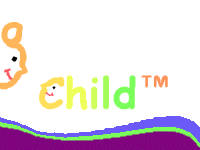Frequently Asked Questions
Why should my child watch Baby Babble™ before he starts to talk?
How old should my baby be when I introduce Baby Babble™?
Is Baby Babble™ for typically developing babies or delayed babies?
Will sign language delay my child from talking?
What sounds should my child be saying?
What words should my child be saying and understanding?
Should my child participate in a playgroup?
Why should my child watch Baby Babble™ before he starts to talk?
During the first months of life, babies begin to acquire the communicative
skills that underlie language long before they say their first words. Infants
are physiologically equipped to process incoming speech signals. By 6 months,
little ones begin to categorize the sounds of their own language. For this
reason, Baby Babble ™ is recommended for infants as young as three months of
age. Exposing infants to the sounds, words, signs, and facial expressions in
this video will help lay the groundwork for future expressive (what your child
says) and receptive (what your child understands) communication.
How old should my baby be when I introduce Baby Babble™?
Baby Babble™ is recommended for children as young as 3 months of age. Visually,
little ones can to fix their gaze on the bright and colorful objects in the
video. They are encouraged to track objects with their eyes from side to side
(a skill that typically develops between 3 and 6 months of age). They are also
encouraged to imitate facial expressions and tongue movements. Auditorally,
little ones are exposed to early developing sounds and words. These sounds and
words will stimulate their minds in an effort to facilitate their ability to
recognize and later understand language.
Is Baby Babble™ for typically developing babies or delayed babies?
Both! Typically developing children and children with delays will both enjoy
Baby Babble™ and receive the benefits of speech and language stimulation. Baby
Babble™ introduces a continuum of speech and language skills beginning with
facial expressions and sounds, and then moving into sign language and first
words, and finally, phrases consisting of two or more words. Baby Babble™ is
intended to “meet” children at their current level while encouraging them to
move into the next level. Baby Babble™ has such a wide age range (3 to 30
months) for this reason. Children at various levels and stages are stimulated
by different parts of the video.
Will sign language delay my child from talking?
Absolutely not! We introduce sign language because babies have the motor
capability to sign (or communicate with their hands) before they have the
skills and muscle coordination to speak. Children want to communicate long
before they can form words. Sign language can help decrease communication
frustrations. By speaking in response to your child’s signs, little ones will
learn verbal skills. As soon as they have the ability to speak, their use of
signs will diminish. Research indicates that sign language increases babies’
verbal skills and IQ later in life!
What sounds should my child be saying?
As pediatric speech language pathologists, this is the most common question that
parents of young children ask us. Children vary greatly from one another in the
timing of specific developmental milestones.
Click here to see a developmental chart that shows typical age ranges
for sound development in children. If you have further questions then contact
your pediatrician or local speech language pathologist.
What words should my child be saying and understanding?
As speech language pathologists, we assess language skills in two main areas:
expressive (what your child says) and receptive (what your child understands).
Both are important for verbal communication. Children must first understand
spoken language before they will be able to speak.
Click here to a developmental chart that shows the typical age ranges
relating to specific expressive and receptive milestones. If you have further
questions then contact your pediatrician or local speech language pathologist.
Should my child participate in a playgroup?
Peer interaction is very important for speech and language development. Children
watch their peers and interact with them in a different way than they do with
their parents. Have you ever seen two babies “talking” back and forth in their
own special language? Peer modeling is so important for speech development. For
this reason, we recommend parents involve their children in playgroups. This
can be at daycare, at church, with neighbors, or with a gathering of friends.
Click here to find out how to select a playgroup for your child.

